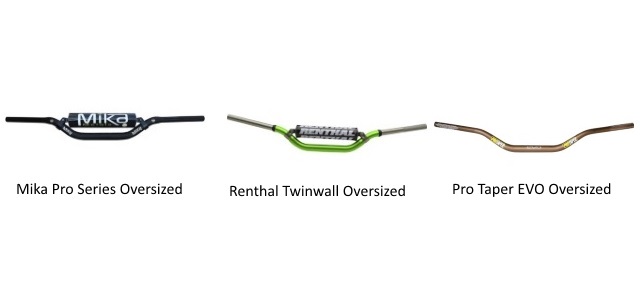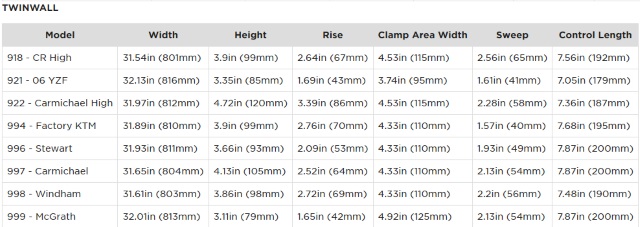
A successful day on the Motocross track requires so many variables but it always comes down to rider comfort. If you're not feeling it, then don't expect to finish first.
For years, riders had no options when it came to handlebars. Sure, several brands existed each peddling their own benefits but with padding and grips off, they pretty much looked the same. These 7/8-inch handlebars ruled the terrain until Pro Taper brought the 1-1/8 inch handlebar into existence. It changed the dirt bike riding landscape and today many riders hold on to these larger bars as manufacturers got into the oversized game. But many still hang on to the traditional 7/8 inch handlebar.
So what dirt bike handlebar is right for you?
First, if you're new, let's break down exactly what the measuring means and how much bigger the oversized 1 1/8-inch handlebar is over the 7/8-inch bar. The measurement comes from the diameter of the "Clamp" section where the handlebars clamp on to the dirt bike via the triple clamps. Therefore the clamp section on the oversized bar is a quarter-inch in diameter bigger than the 7/8-inch bar.
The Pros for 7/8-inch Handlebars
- Cheaper
- Better flex
- Usually lighter
The Cons for 7/8-inch Handlebars
- Weaker
- Not ideal for hard riding or Supercross tracks
The Pros for Oversized 1 1/8-inch Handlebars
- Stronger
- Sturdy
- Tends to reduce arm pump and fatigue
The Cons for Oversized 1 1/8-inch Handlebars
- Costs more (also need oversized clamps)
- Rigid
Of course, none of this matters if you prefer one over the other. Younger riders generally start off on the 7/8 handlebar and, after a few years, a switch to the oversized makes all the difference in the world. If arm pump is a problem an easy potential solution is switching to the larger bar. However, some riders find the rigid 1 1/8-inch bar causes arm pump more than the smaller, flexible bar.
The serious racer generally leans towards the larger bar for its strength on jumps (the last thing you want is a bar snapped in half casing a triple) but the off-roader or weekend warrior saves money and usually has little problem with the smaller bar.
The Flexx Handlebar is the Fasst Company's attempt at reducing vibrations and offering a better flex (more like the 7/8 inch bar) in a 1 1/8-inch bar to help smooth out the rough edges when bottoming out or on other large bumps. It's expensive but those with prior wrist injuries or who simply enjoy traversing rough terrain might find some relief and comfort with the Flexx.
Handlebar Bend (or Model)
In addition to the clamp, handlebars also have different lengths in width, height, rise, sweep and control length. See diagram:
Handlebar bends (essentially the model) offer varying degrees of these dimensions that accommodate taller riders, those with wider shoulders or longer arms. A taller rider, for example, might feel more comfortable with a taller handlebar bend or less sweep. Manufacturers incorporate these bends in their traditional 7/8-inch and 1 1/8-inch handlebars. Bends often get named after popular riders or OEM spec like the Renthal Twinwall Handlebars:
If your wrists and/or hands often hurt after riding, you feel cramped or too stretched out leaving you uncomfortable, or experience arm pump too often consider changing the handlebars on your dirt bike and see if that fixes some of these more common rider complaints.
Check out other articles in our Pros and Cons series:













